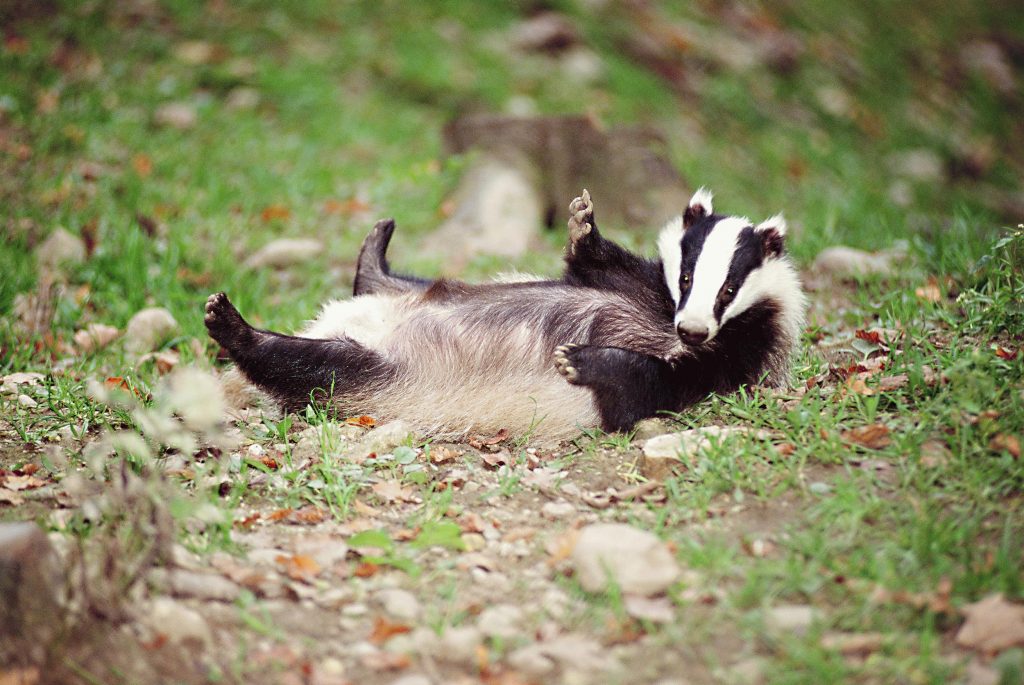Badgers rarely venture out during the day and live in an extensive network of underground tunnels and nests, known as a ‘sett’. Badgers prefer a well drained soil and often dig their setts under matted tree roots to provide stability to the soil. Nest chambers in the tunnels are lined with dry grass, bracken and straw.
Bedding may be taken to the entrance of the sett in order to air in the sun. When emerging at nightfall, they go in search of food, usually venturing into a nearby field or woodland. Badgers emerge at dusk in summer to spend the night foraging. In winter, Badgers are much less active, however, they do not hibernate.

They are mainly carnivores but also referred to as omnivorous and insectivorous and a tasty earthworm or juicy bulb will satisfy their hunger along with small mammals, lizards, frogs, insects or young rabbits and birds. Earthworms make up 50% of their diet.
Depending on the time of year badgers also feed upon berries, fruits, nuts, roots and cereals if other food sources are short. Badgers are also known to eat carrion (the carcass of a dead animal). They also dig up the nests of wasps and bumblebees in order to eat the larvae.
Mating occurs during the summer, however, implantation is delayed until December which means they can hold fertilised eggs in suspended development until the right time for breeding occurs. The gestation period is 7 – 8 weeks. One litter of 2 – 5 cubs is born from January to March.















